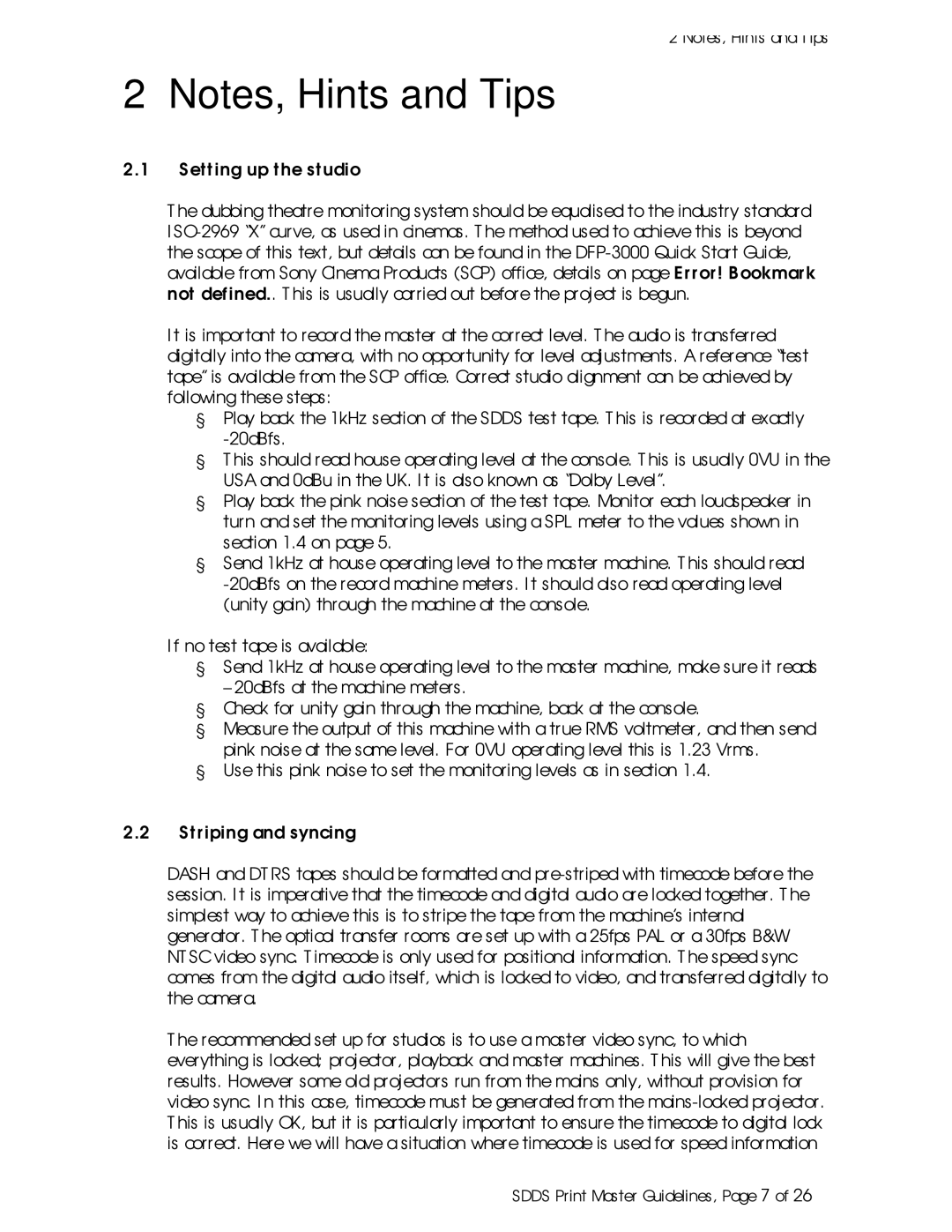2 Notes, Hints and T ips
2 Notes, Hints and Tips
2.1Set ting up the studio
T he dubbing theatre monitoring system should be equalised to the industry standard I
I t is important to record the master at the correct level. T he audio is transferred digitally into the camera, with no opportunity for level adjustments. A reference ªtest tapeº is available from the SCP office. Correct studio alignment can be achieved by following these steps:
§Play back the 1kHz section of the SDDS test tape. T his is recorded at exactly
§T his should read house operating level at the console. T his is usually 0VU in the USA and 0dBu in the UK. I t is also known as ªDolby Levelº.
§Play back the pink noise section of the test tape. Monitor each loudspeaker in turn and set the monitoring levels using a SPL meter to the values shown in section 1.4 on page 5.
§Send 1kHz at house operating level to the master machine. T his should read
I f no test tape is available:
§Send 1kHz at house operating level to the master machine, make sure it reads ±20dBfs at the machine meters.
§Check for unity gain through the machine, back at the console.
§Measure the output of this machine with a true RMS voltmeter, and then send pink noise at the same level. For 0VU operating level this is 1.23 Vrms.
§Use this pink noise to set the monitoring levels as in section 1.4.
2.2Striping and syncing
DASH and DT RS tapes should be formatted and
T he recommended set up for studios is to use a master video sync, to which everything is locked; projector, playback and master machines. T his will give the best results. However some old projectors run from the mains only, without provision for video sync. I n this case, timecode must be generated from the
